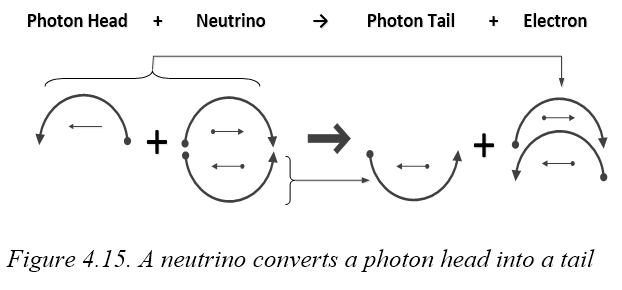A neutron is stable in a nucleus but after about fifteen minutes in empty space it turns into a proton. One of its down quarks “flips” to become an up quark, turning the whole into a proton. Again, the standard model needed some agent to cause neutron decay and as gluons couldn’t do it, it postulated a new weak force that:
1. Affects all matter. Electromagnetism affects charge and gluons affect quarks but the weak force affects all matter.
2. Violates parity-symmetry. Weak interactions are left-right different.
3. Has no bound state. Electromagnetism binds atoms in molecules, the strong force binds nucleons in the nuclei and gravity binds stars in galaxies but the weak force binds nothing.
4. Was asymmetric. Neutrons decay into protons but protons are stable in space.
Neither electromagnetic nor strong forces act like this, so the standard model followed the by now standard practice of inventing a new field with new bosons and charges. The new charge, called isospin (+½,–½), was retro-fitted to allow charm quarks to interact with down quarks but not up quarks, etc., as observed. But this time the boson agents needed had to be heavier than protons and a field that absorbed and emitted mass was unheard of.
By now, virtual agents were the fashion and if the equations worked, it was accepted practice to “prove” they existed by finding matching accelerator collision resonances, so when in 1983 CERN found a million, million, million, millionth of a second event in the expected range, weak bosons immediately joined gluons in the standard model pantheon. On this flimsiest of evidence physicists today claim that:
“Experiments have observed three bosons that carry the weak force” (Marurger,2011) p221.
In fact, bosons haven’t been observed carrying anything, and what has been observed is a transient accelerator event. Suppose witness in a murder case said “I observed the knife that killed the victim” but cross-examination revealed that he observed a knife of the same size that he made! No court in the land would accept that evidence so why does physics call the same thing “proof”? CERN observed the energy spikes it created not bosons carrying any force. No evidence at all links the CERN signal to the weak effect so it isn’t proven at all. If finding a matching energy spike proves a virtual agent exists, does not finding one for gravitons mean they don’t exist? One can’t have it both ways. Yet physics now accepts that neutrons decay when a 4.8 MEv down quark “emits” a W boson of mass 80,400 MEv! That such a tiny particle emits such a massive particle is like saying that an ant gave birth to an elephant.

It doesn’t help that the equations allow a neutron to decay in any of three ways (Figure 4.14), as it could:
1. Emit a W– that decays into an electron and anti-neutrino (Figure 4.14a)
2. Emit a W– boson that is hit by a neutrino to give an electron (Figure 4.14b)
3. Interact with a neutrino and a W+ boson to give an electron (Figure 4.14c).
Three different causes might seem better than one but are three different alibis for a murder better than one? That a quark could emit a W- into a field or could absorb a W+ from one is the sort of after-the-fact reasoning that science is supposed to protect us from.
The reversible equations led to a fruitless thirty-year search for proton decay, ending in the massive Kamioka experiment that estimated the free proton half-life at over a billion, billion, billion years. The standard model expected protons to decay in space but they don’t.

The quark as a photon head-tail structure suggests a simpler alternative. If a down quark is head-head-tail photons and an up quark is head-tail-tail photons, a down quark becomes an up quark, to turn a neutron into a proton, when a set of photon heads become tails. As Figure 4.15 shows for one channel, if a neutrino hits a photon head directly, the processing can rearrange to turn photon heads into tails. It follows that a neutrino hitting a neutron just right can turn it into a proton as the beta decay equation implies (Note 1). To do the reverse, a proton needs an electron hit to turn its tails into heads, but to get an electron right next to a quark takes a lot of energy so proton decay only occurs in the heart of stars. This effect doesn’t alter the net remainder so it isn’t electromagnetic, no photons are shared so it isn’t strong and it affects any head-tail photon mix, which is all matter.
Quantum realism concludes that the weak effect is due to the neutrinos that are all around. It predicts that neutrons won’t decay in a neutrino-free space and that proton decay needs a direct electron strike that takes energy that only occurs in stars. In quantum realism, weak bosons are made-up agents, like fairies at the bottom of the garden.
Note 1. In beta decay, a neutrino hitting a neutron can turn it into a proton by the equation N + ν → P+ + e−. Equally an electron can turn a proton into a neutron by inverse beta decay P+ + e− → N + ν. Why insert fictional boson particles into these equations?